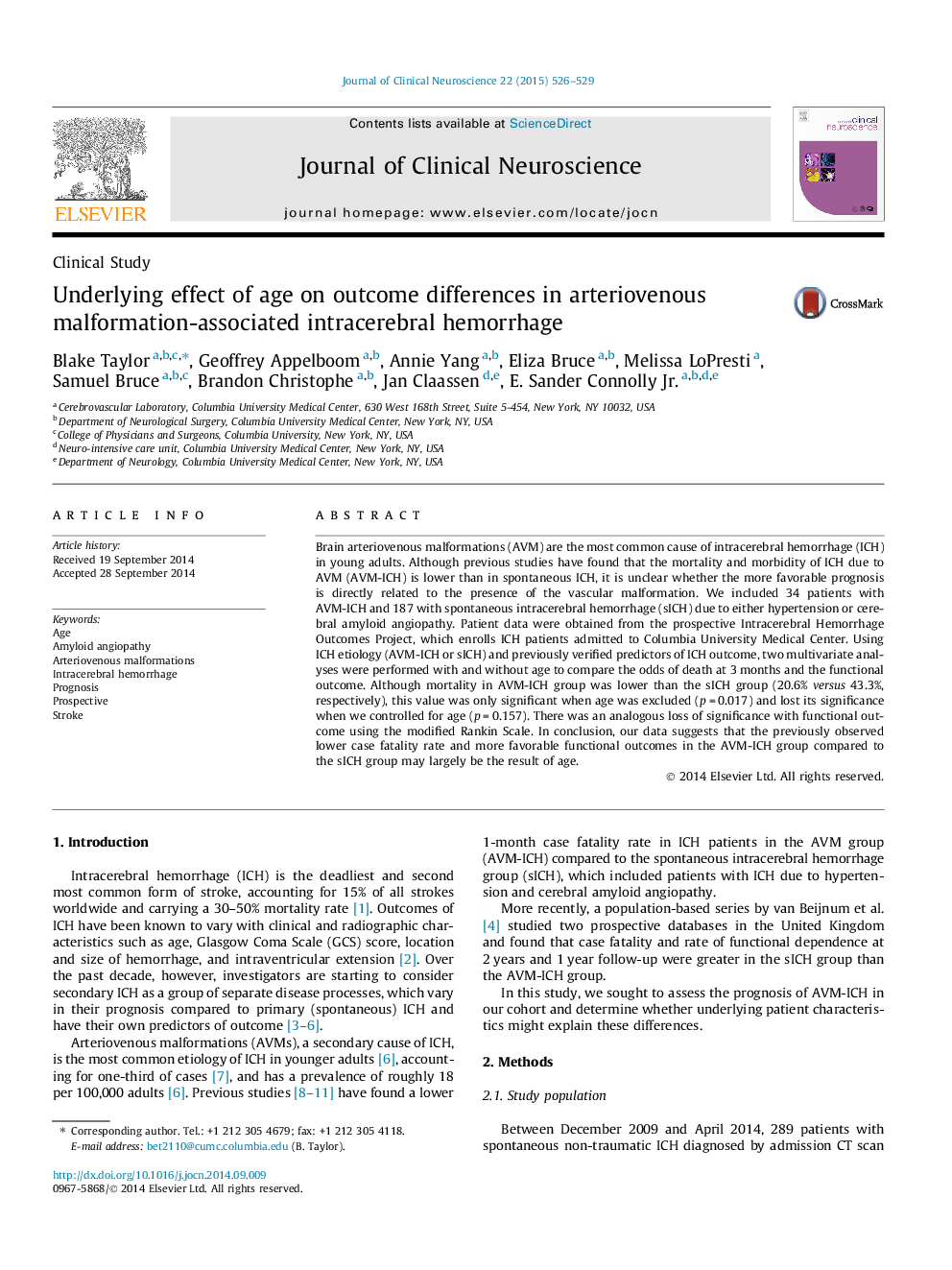| Article ID | Journal | Published Year | Pages | File Type |
|---|---|---|---|---|
| 3058195 | Journal of Clinical Neuroscience | 2015 | 4 Pages |
Brain arteriovenous malformations (AVM) are the most common cause of intracerebral hemorrhage (ICH) in young adults. Although previous studies have found that the mortality and morbidity of ICH due to AVM (AVM-ICH) is lower than in spontaneous ICH, it is unclear whether the more favorable prognosis is directly related to the presence of the vascular malformation. We included 34 patients with AVM-ICH and 187 with spontaneous intracerebral hemorrhage (sICH) due to either hypertension or cerebral amyloid angiopathy. Patient data were obtained from the prospective Intracerebral Hemorrhage Outcomes Project, which enrolls ICH patients admitted to Columbia University Medical Center. Using ICH etiology (AVM-ICH or sICH) and previously verified predictors of ICH outcome, two multivariate analyses were performed with and without age to compare the odds of death at 3 months and the functional outcome. Although mortality in AVM-ICH group was lower than the sICH group (20.6% versus 43.3%, respectively), this value was only significant when age was excluded (p = 0.017) and lost its significance when we controlled for age (p = 0.157). There was an analogous loss of significance with functional outcome using the modified Rankin Scale. In conclusion, our data suggests that the previously observed lower case fatality rate and more favorable functional outcomes in the AVM-ICH group compared to the sICH group may largely be the result of age.
